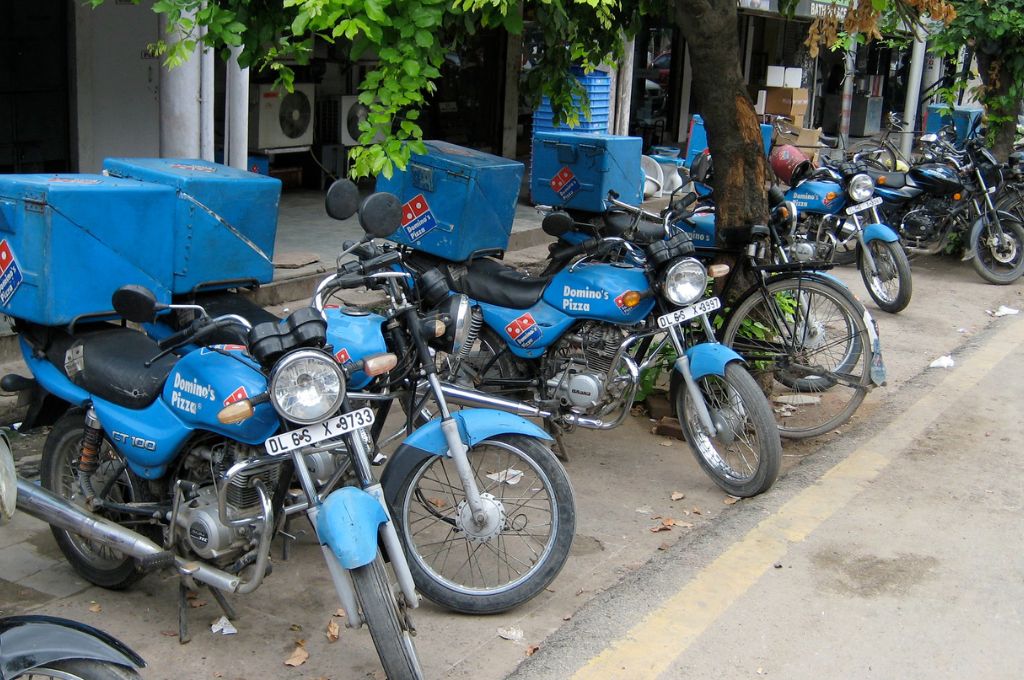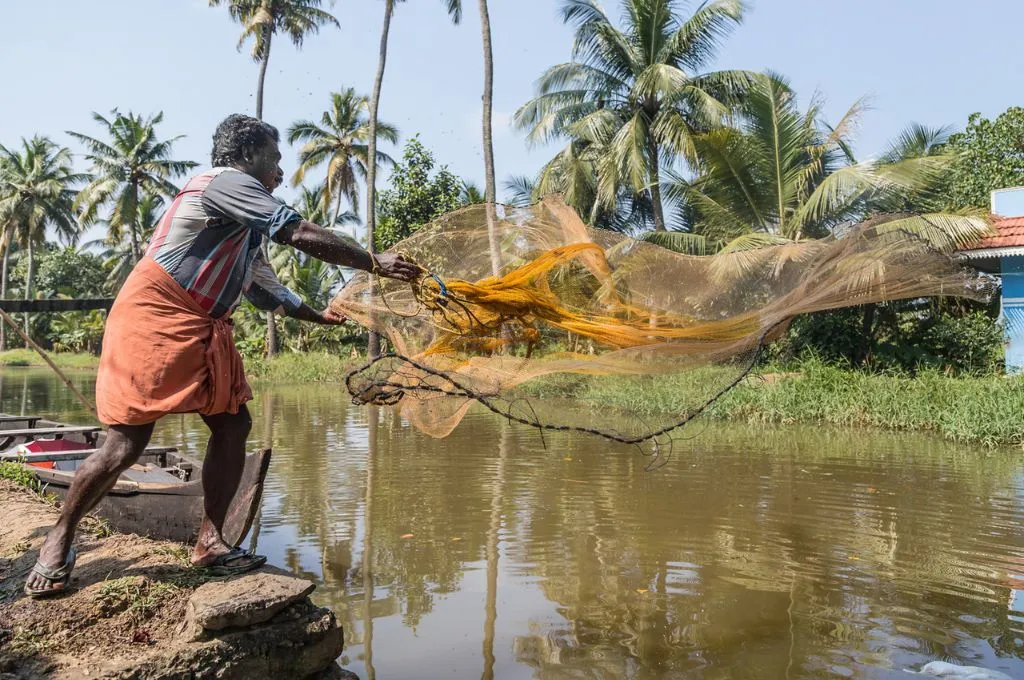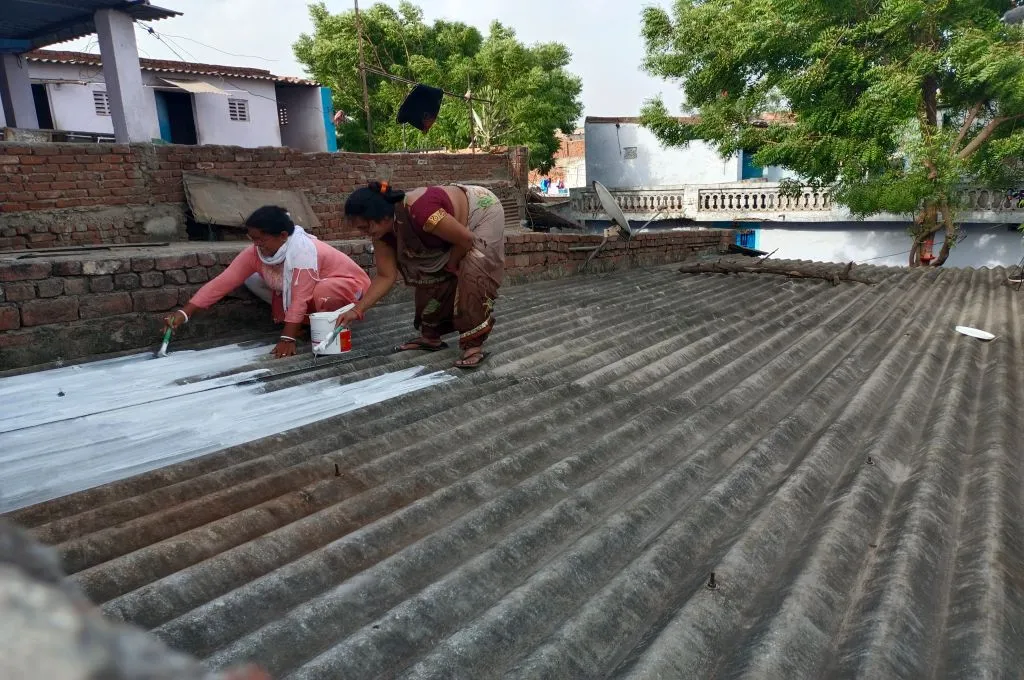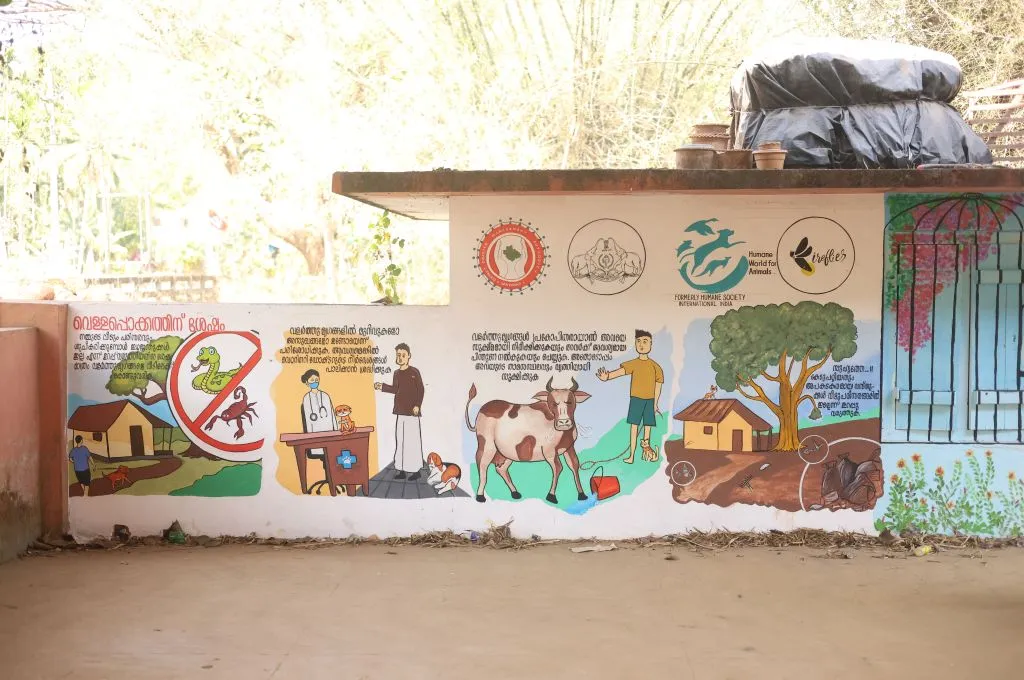The blistering Delhi sun is beating down on Ali as he checks his phone under the shade of a shop awning. It’s 49 degrees and Ali looks around to see if there’s a drinking water fountain or a public toilet nearby, somewhere he can splash some water on his face. But there is no respite in sight, and the shopkeeper too asks Ali to move away, grumbling that he’s blocking the entrance for real customers. Ali is only three hours into his 13-hour shift as a platform delivery rider, bringing fresh meals and groceries to the doorsteps of the city’s upper-middle-class and middle-class population. As he walks back to his motorcycle, his phone finally buzzes with the details of his next delivery. He wipes his face with a handkerchief, puts on his helmet, and gets back to work.
Ali is one of the thousands of platform delivery agents who are subject to the gruelling reality of India’s rising temperatures. For him, heatwave warnings and advisories that recommend avoiding outdoor activities, carrying a hat or an umbrella, and drinking hydrating beverages like lassi or torani (a rice-based drink) are impractical. He needs to rush to complete as many deliveries as possible to be able to put food on the table.
The risks of rising temperatures
India is one of the top five countries in the world with the highest exposure to extreme heat. Additionally, Indian cities frequently experience higher temperatures than their surrounding areas. This is due to a phenomenon known as urban heat island effect, which occurs because infrastructure such as roads and buildings in cities absorb and re-emit more heat than natural surfaces.
Climate change is only further exacerbating both the intensity and the frequency with which heatwaves are occurring. Recent proclamations by the Indian Meteorological Department warning of ‘above normal temperatures’ and scorching summer months ahead are no longer surprising. February 2023 was the hottest February ever recorded, and in 2022 India recorded 280 heatwave days before July.
To combat rising temperatures, the government has devised several heat action plans (HAPs), which are created by states, districts, or cities. HAPs are meant to guide local authorities in preparing for and responding to the risks of heatwaves by establishing a set of protocols. They outline actions such as sharing information with the public and across various departments like health and agriculture as well as developing and building cooler infrastructure. However, a recent report by the Centre for Policy Research suggests that India’s HAPs, very few of which exist at the city level, are neither designed to manage local, context-specific challenges nor are they able to identify and address unique heat impacts for the most vulnerable communities. This is critical because people do not experience the impacts of heat in the same way. Social factors such as poverty, gender, caste, political power, and agency and access to social networks shape how communities experience urban heat. Ali, for instance, couldn’t find affordable housing in Central Delhi, where most of his orders come from, when he moved to the city. And so he was forced to live in substandard housing, made out of tin sheets without adequate ventilation, at the periphery of the city. Neither his home, which can be up to six degrees hotter than the outdoor temperature, nor his workplace, offer refuge from the heat.

Heatwaves and India’s gig economy
Climate-induced risks like extreme heat are a significant issue for gig workers, a sector that is rapidly growing in India. According to a report by NITI Aayog, India currently boasts a contingent workforce of 7.7 million gig workers, a figure that is projected to rise to 23.5 million by 2029–30. Furthermore, BCG estimates indicate that the number of gig workers within India’s non-farm economy is expected to soar to a staggering 90 million over the long term.
Delivery agents in India do not have the choice to turn down gigs or decide which gigs to take and when.
Delivery agents are particularly vulnerable to rising temperatures as they spend long hours exposed to the heat while cycling or riding motorbikes. Without a company-mandated health insurance policy, risks such as dehydration, heat exhaustion, and even heat stroke are often undiagnosed or untreated and can be fatal. Their vulnerability is further heightened by lack of access to shade, water, and restrooms during the delivery process.
Despite this, delivery agents in India do not have the choice to turn down gigs or decide which gigs to take and when. This is because delivery platform companies provide workers with nominal autonomy—delivery riders have limited ability to choose when to work, which routes to take, or even what to wear. Their freedoms exist under the tight grip of algorithmic management wherein algorithms are used to measure and supervise the worker’s movements, routes, time taken to deliver, as well as the delivery ‘gigs’ offered to them. Platforms use surveillance, supervision, incentive pricing, customer rating, disciplinary action, and various other means to push the delivery agent to work a certain number of hours. Workers are often given a limited time frame to decide whether to accept or reject work, which can affect their ratings and future assignments. This results in precarity of income and working hours for the worker, further aggravating the risk of heat stress as they may be forced to work longer hours and prioritise gigs over their own well-being. Moreover, the lack of access to a fair dispute resolution mechanism to contest or appeal poor ratings or unfair rejection of work compounds the difficulties faced by these workers.
In addition to this, the platform model does not build sufficient social trust between the riders, customers, platform companies, stores, and restaurants. This results in workers like Ali having to extend emotional labour and develop relations with stores and restaurants to access cool and shaded spaces while waiting or ask for a glass of water, given the lack of infrastructure provided by the state.
What needs to change?
It’s clear that platforms need to take responsibility for the well-being of their delivery partners. Recently, Zomato established The Shelter Project with the aim of “building public infrastructure to support the entire gig economy”. As a part of this initiative, two rest points have been built in Gurgaon to provide clean drinking water, access to washrooms, first aid, and phone-charging stations. Whether agents can afford to take a break, given the stringent structures of the platform model, has not yet been addressed. With joblessness pushing more people into the sector, the lack of social safety nets for this new class of workers poses significant challenges.
Therefore, a more holistic approach must be adopted in order to build heat resilience for gig workers. Listed below are some suggestions:
- Developing more inclusive HAPs: While the impacts of extreme heat are well established for certain domains of work such as that of construction workers, farmers, brickmakers, and street vendors, the vulnerability of platform-based delivery agents is less understood and they are often left out of the category of ‘vulnerable’ populations. This results in actions that don’t necessarily target the needs of gig workers. However, by declaring delivery gig workers as vulnerable to heat stress, HAPs can include actions that directly address their needs through dialogue and various participatory processes, and create improved heat response mechanisms.
- Creating and enforcing labour standards and social protections: Governments must build a regulatory environment to facilitate change by employers. Currently, India’s Occupational Safety, Health and Workplace Conditions Code, which mandates companies to create safe working conditions for employees, does not include any provisions around climate change. There are no specified guidelines for how employers should create safe working conditions, especially for outdoor workers such as platform delivery workers even in the case of extreme heat. Incorporating climate risks in these guidelines and enforcing labour standards and social protections could be the first step towards creating a safe and healthy environment for delivery riders.
- Planning for rising temperatures with a focus on vulnerable communities: Indian planners must consider improving tree canopy and vegetation cover, and address gaps in service provision around water availability as well as public seating and parks to ensure Indian delivery agents have access to cooler spaces. It’s essential that planners acknowledge the uneven geographies of risk in cities and deploy infrastructure for the most vulnerable and where it’s most needed. For example, cities such as Baltimore, Washington DC, and Richmond in the United States have mapped urban heat islands and found that the hottest areas are co-located with some of the cities’ poorest communities. Their HAPs then target actions like tree plantations in these neighbourhoods.
- Restructuring the platform model: Platforms working with delivery riders must be cognizant of the dangers of long and continuous work during heatwaves. They must provide better working conditions, insurance, and social safety nets to workers. This could include covering wages lost due to heat-related illnesses, more transparency around pricing and ratings, and mechanisms to improve and fast-track dispute resolution. By relaxing the strict control that they hold over their riders and by enabling rider autonomy, platforms can allow delivery agents to make decisions that are safer for their health, including taking breaks and detours to access cool spaces and water. Platforms should also consider integrating vernacular micropractices such as wearing cool or light clothing in their operating procedures. Furthermore, they can offer incentives or additional compensation to delivery agents during extreme weather to help offset additional costs and risks associated with high temperatures.
The impacts of climate change are expected to increase the frequency and intensity of heatwaves, making extreme heat stress a significant public health concern for all workers, particularly those engaged in physically demanding, outdoor jobs. Therefore, it is crucial that platform companies, workers, governments, and regulatory bodies work together to develop and implement policies and interventions for the protection of workers’ health, safety, and rights. Effectively addressing heat stress in the platform economy can possibly serve as a model for broader workplace and public health interventions, especially as the climate emergency brings forth newer challenges.
—
Know more
- Read this research that highlights how riders develop a ‘tacit knowledge’ of cooling infrastructure across the city to adapt to heat.
- Read this article to learn why it’s important to reimagine welfare delivery for gig workers.
- Read this article to learn why heat action plans in India must focus on reducing indoor temperatures to help mitigate heat stress.






